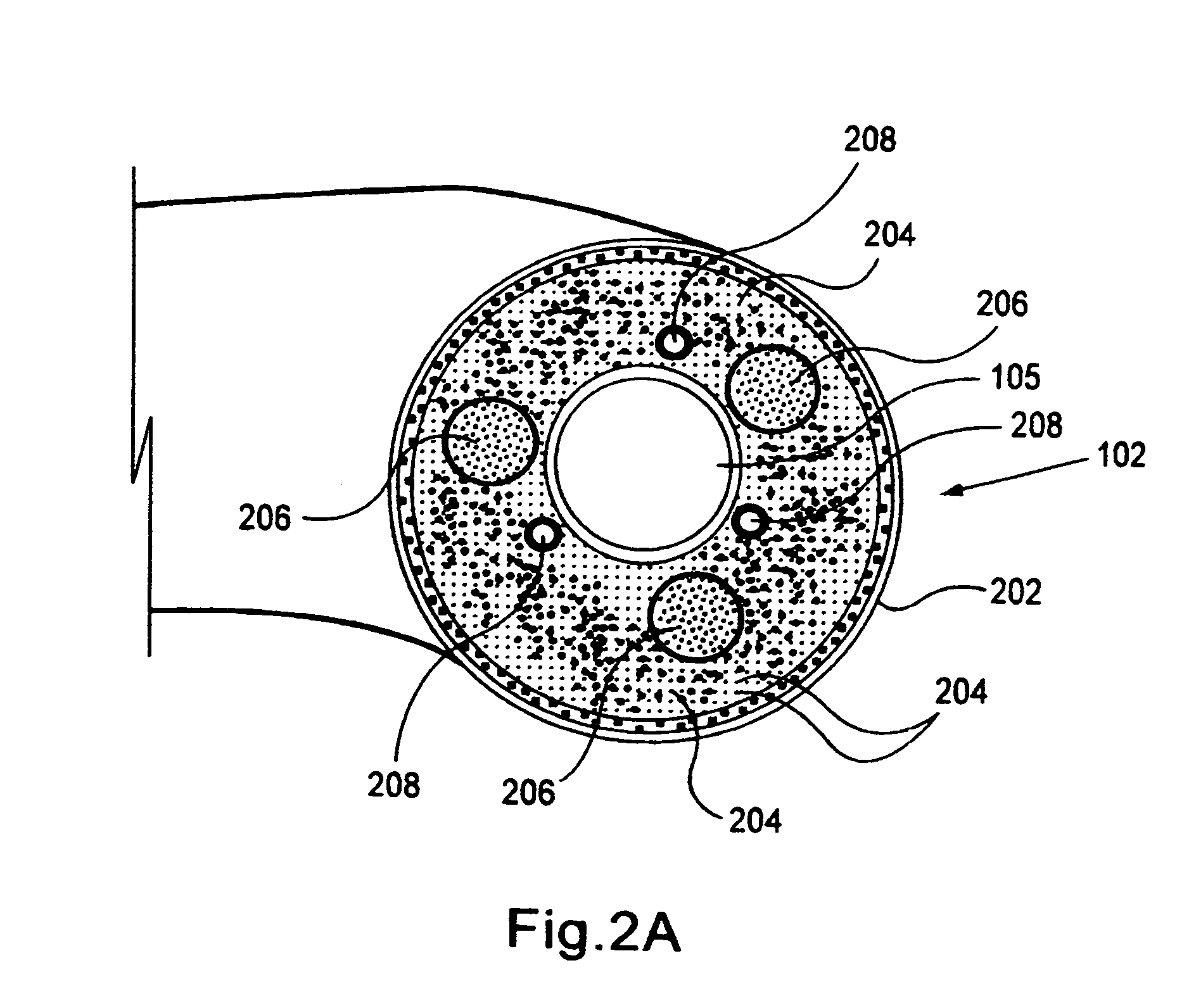Long mission tethered aerostat and method of accomplishing
a technology of aerostats and long missions, applied in the field of lighter thanair airships, can solve the problems of air infiltration, air cannot provide lift, inside the helium bag needs to be purged, etc., and achieve the effect of maintaining the rigidity of the airship
- Summary
- Abstract
- Description
- Claims
- Application Information
AI Technical Summary
Benefits of technology
Problems solved by technology
Method used
Image
Examples
Embodiment Construction
[0038]FIGS. 1 to 4A and 4B illustrate a ground-based helium ballast system for a tethered aerostat 10 formed in accordance with one embodiment of the present invention. Referring to FIG. 1, the ground based ballast system 100 generally comprises a ground based helium ballast tank having an attendant helium storage tank 101 with optional helium storage bottles 109 disposed on the ground 20 including a feed-tube 105 which is either embedded within the tether or runs parallel to the tether 102. A double slip ring 107 allows the helium feed-tube 105 as well as the rest of the tether 102 to adapt to continuous orientation (yaw) and rotational changes of the aerostat and catenary configuration of the tether without losing its helium-tightness. The helium ballast tank 101 and the helium storage bottles 109 may be housed in a launch and retrieval vehicle, not shown, on the ground 20.
[0039]The tethered aerostat 10 is of a suitable aerodynamic shape, as shown in FIG. 1, in order to minimize w...
PUM
 Login to View More
Login to View More Abstract
Description
Claims
Application Information
 Login to View More
Login to View More - R&D
- Intellectual Property
- Life Sciences
- Materials
- Tech Scout
- Unparalleled Data Quality
- Higher Quality Content
- 60% Fewer Hallucinations
Browse by: Latest US Patents, China's latest patents, Technical Efficacy Thesaurus, Application Domain, Technology Topic, Popular Technical Reports.
© 2025 PatSnap. All rights reserved.Legal|Privacy policy|Modern Slavery Act Transparency Statement|Sitemap|About US| Contact US: help@patsnap.com



